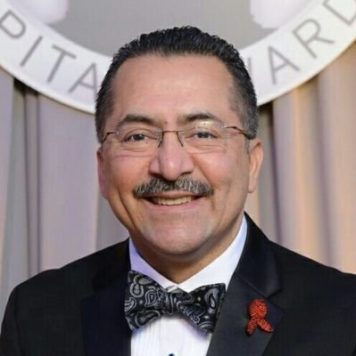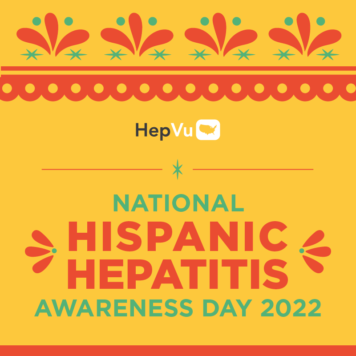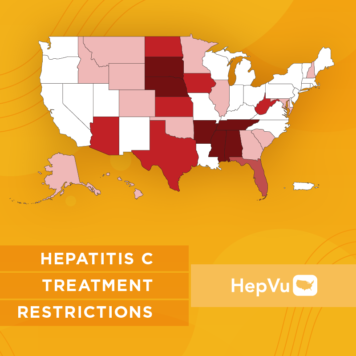In observance of National Immunization Awareness Month, HepVu sat down with Chari Cohen, President of the Hepatitis B Foundation, to discuss updates to CDC’s guidelines for vaccination against Hepatitis A and Hepatitis B.
On April 1 of this year, the Centers for Disease Control and Prevention (CDC) published updated Hepatitis B vaccination recommendations that all adults aged 19 through 59 years receive the Hepatitis B vaccine. What can you tell us about these updates to the CDC’s new guidelines?
Ultimately, the new recommendation alters the adult guidelines from being risk-based to universal for all adults aged 19 to 59. For the last couple of decades, adult Hepatitis B vaccine recommendations relied on healthcare providers to assess a patient’s risk for Hepatitis B based on different criteria, then decide whether that person should be vaccinated. There were over 12 risk groups to consider, which created a lot of challenges to administering adult Hepatitis B vaccine. Providers had to be aware of all the possible risk groups and how to ask related questions. This routine put a lot of these at-risk groups in a space where they were potentially stigmatized; providers did not like to ask those questions and patients often did not like to answer them—or were unaware of their risk.
Therefore, it has been very difficult to implement adult vaccination for Hepatitis B in the U.S. in a meaningful way. Adult Hepatitis B vaccination rates in the U.S have not increased over the last couple of decades under the risk-based model. Transitioning over to a universal vaccine recommendation for most adults is very smart because it will remove many challenges. It is now much easier to communicate to adults that they are recommended to get the Hepatitis B vaccine.
How did the advocacy work of the Hepatitis B foundation inform this change in guidance?
The Hepatitis B Foundation, along with other public health advocates around the country, has been informally advocating for updated recommendations for 15 or 20 years. We were seeing that vaccination rates remained low, and it was hard for high-risk communities to get vaccinated. Risk-based recommendations ultimately created access issues because a lot of healthcare providers were not stocking the vaccine and reimbursement was an issue for providers. Therefore, broadening to universal vaccination increases access.
The Hepatitis B Foundation has been communicating with CDC, other federal partners, and healthcare providers, supporting the message “vaccinate everyone.” Throughout 2021, we led formal advocacy efforts, including letter writing campaigns for public comment intended for the Advisory Committee on Immunization Practices (ACIP) meetings. We had a number of partners and staff members put in requests to make oral comments at the ACIP meetings as well. We had quite a few people make excellent comments about why universal recommendations are so important. We also circulated public sign-on letters and petitions that we then sent to ACIP. Lastly, we provided feedback on the recommended draft recommendations.
The thing about viral hepatitis advocacy work is that our strength lies in our partnerships. Through our Hep B United coalition, we work with partners around the country and we are able to reach public health professionals, community leaders, academics, and patients. We were able to mobilize partners into one voice, advocating for the same cause.
How will these updates translate to real-world impact in the fight to eliminate viral hepatitis in the U.S.?
I have no doubt we are going to see an increase in adult Hepatitis B vaccination rates. In the U.S. currently, only 30% of adults are vaccinated, but I think reducing the barriers will get more people vaccinated against Hepatitis B. Universal recommendations will improve vaccine coverage for high-risk communities. You would think that risk-based recommendations would be good for high-risk communities, but it hasn’t worked that way. Among Healthcare providers in the U.S., for example, only 67% are vaccinated for Hepatitis B. The vaccination rate for those with diabetes—another high-risk group—is only 33%.
We believe these new vaccine recommendations will allow us to get the vaccine to more people, including those at increased risk of infection, which is why this update is so important. Now that we have the updated recommendations, we must make sure that they are implemented.
What can advocates, clinicians, and other public health workers do to help increase viral hepatitis vaccination?
Advocates and community leaders will need to educate healthcare providers and communities about the new recommendations. We will also need to work together to create culturally responsive messaging for diverse communities around the country and awareness campaigns for healthcare providers.
We need to monitor how well these new recommendations are being implemented so that our policy makers at the federal and state levels realize how much funding is needed for effective vaccine acquisition and distribution. They need to hear our stories. We must document both our successes and challenges to keep the conversation going.
What message do you have for those who are hesitant to get vaccinated for Hepatitis B?
Over 1 billion doses of the Hepatitis B vaccine have been given out since the 1990s, so it is proven to be safe. The vaccine is effective and will prevent you from getting Hepatitis B. If you talk to people who have Hepatitis B or their loved ones, they will tell you how important it is to prevent this infection. It is a devastating illness. It can create significant negative impacts among people and their families. If you can prevent yourself from getting Hepatitis B or liver cancer, you absolutely should. Vaccination is safe, it is effective, and it saves lives.




